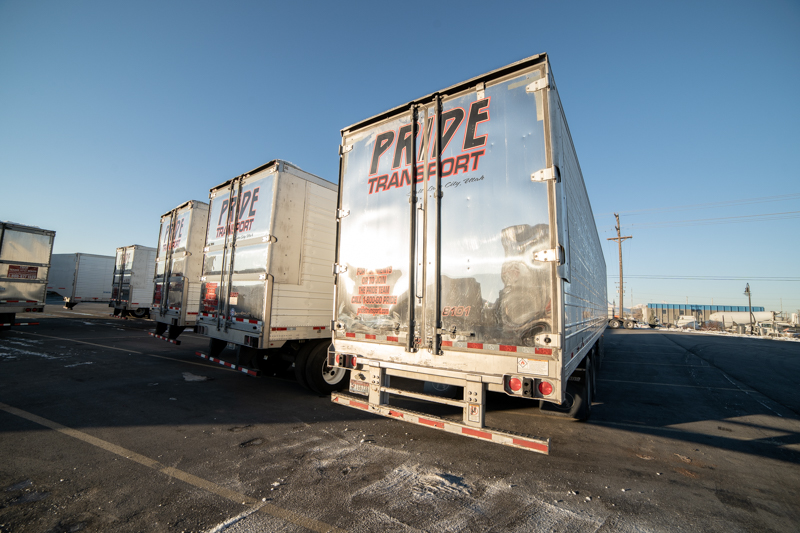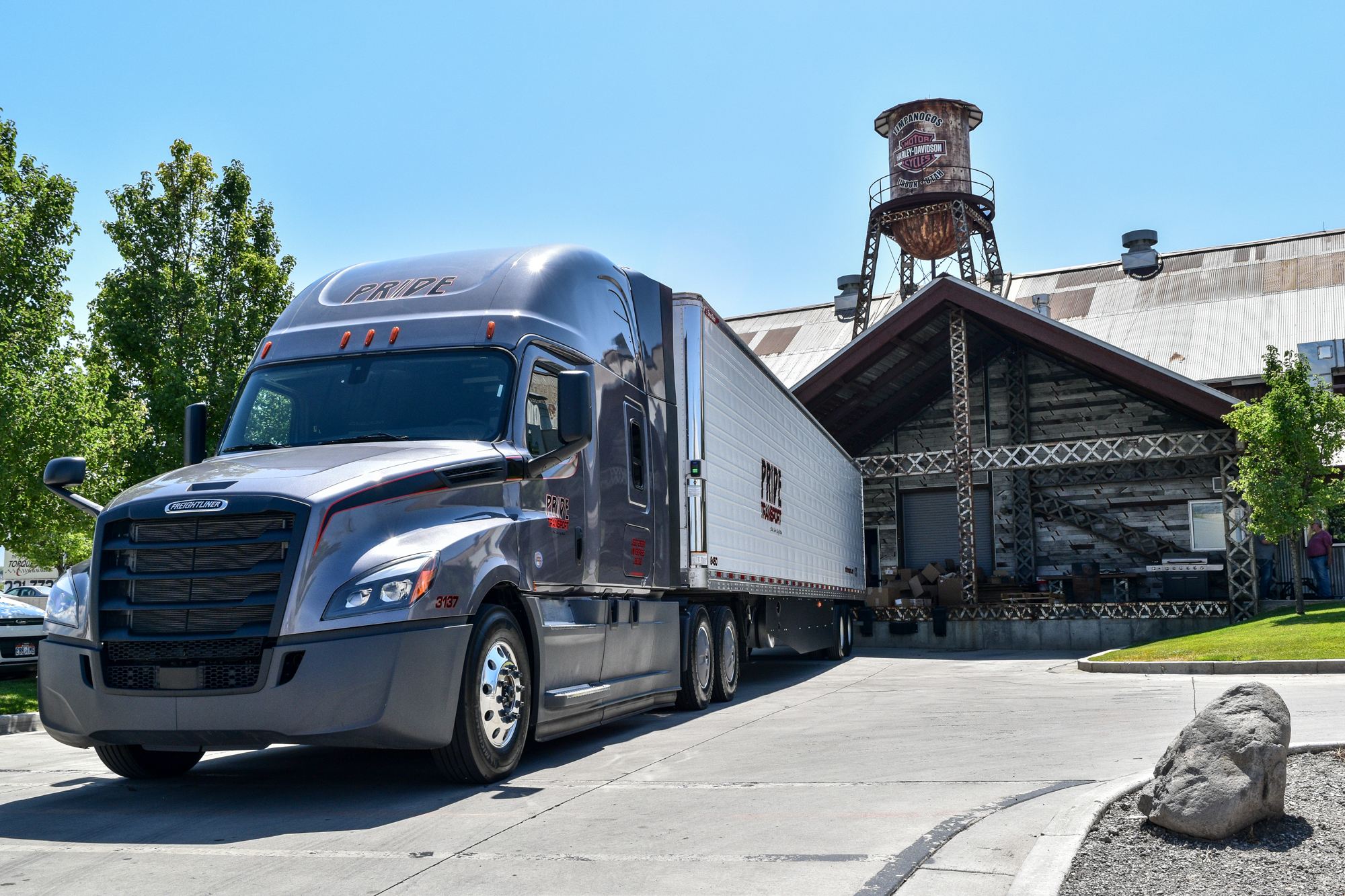by Pride Transport | Aug 07, 2023
Even in a profession as well-established as trucking, it’s important to look ahead and anticipate where the industry will head next. Considering the challenges of 2022 (labor is short, gas prices are high, and competition is everywhere), anyone who isn’t responding with strategic business changes is liable to get left behind in 2023.
In this article, we’ll lay out what you need to know about the state of the industry, including the economic trends, technological advancements, safety updates, hiring projections, and environmental factors that will impact the future of trucking.
How Inflation Continues to Impact the Trucking Industry
Inflation continues to impact many U.S. industries, and trucking is no exception. The high cost of fuel affects everyone, though larger companies seem to absorb the overall impact more easily than smaller trucking operations. Regardless of fleet size, high operating costs and competition for both labor and loads will require trucking companies to continue to do more with less.
That’s because in addition to fuel, the cost of other business components has also gone up. The cost of acquiring new vehicles — or even just parts to maintain current fleets — has increased, as has the starting salary to hire and retain new drivers in the current labor shortage.
Increased demand for parts and vehicles will require both large-fleet operations and owner-operators to hang onto their current vehicles for as long as possible — provided that they can find appropriate maintenance for their vehicles in the first place, as maintenance technicians are increasingly hard to find and hire. In an effort to combat the labor shortage, it’s possible that larger trucking organizations will invest more heavily in autonomous vehicles.
The Tech to Expect in 2023: The Future of Trucking
Technology will continue to improve efficiency in many trucking operations. In-truck monitoring software provides more accurate insights into route and fuel efficiency, how far trucks are traveling without carrying freight, and other operating systems. Owners can then use this data to streamline operations, which is essential in the face of high fuel prices and increasing maintenance and vehicle replacement costs.
In addition to trucking software, companies are embracing tech innovations through the use of autonomous trucks. Although widespread adoption of autonomous vehicles won’t happen in the near future — there are still many unanswered questions regarding safety and reliability — research will continue in the hopes of more autonomous options in the coming years, especially as more states consider which autonomous vehicles will be allowed to operate on public roadways.
Automation isn’t the only tech trend in trucking: Electric vehicles (EVs) will offer a clean energy option and help more fleets decrease their reliance on diesel fuel. EVs are becoming more affordable (and therefore accessible) to more trucking companies. The federal Inflation Reduction Act also makes it possible for even smaller fleet operations to afford the investment in EVs.
Upcoming Safety Guidelines and Regulations
As technology changes the way the industry operates, safety guidelines and vehicle regulations must evolve as well. In addition to proposed regulations on automatic emergency braking and safety procedures, here are a few other important safety guidelines to know.
Electronic logging devices
The use of electronic logging devices (ELDs) isn’t new to the industry; drivers have used ELDs to log their hours of service (HOS) for several years. What’s important to know now is that many wireless carriers are sunsetting 3G networks in favor of more advanced services — most notably 5G devices. Any ELDs that previously ran on 3G will need to be replaced with a device that meets the Federal Motor Carrier Safety Administration’s (FMCSA) requirements.
Electronic IDs
While still in its early stages, the FMCSA’s proposal regarding electronic IDs “would require every commercial motor vehicle operating in interstate commerce be equipped with an electronic identification system that would help inspectors better target high-risk motor carriers,” according to Transport Topics.
Some carriers already use a similar type of digital ID to make their presence known to roadside enforcement. The new rule would require every carrier to identify themselves in an effort to help roadside enforcement focus on carriers who need additional oversight. What remains unclear is how much information could be gathered, and how this type of system would affect the privacy of individual drivers.
Speed limiters
Speed limiters are another safety feature that, although not new, might be more heavily regulated in 2023. The goal of speed limiters is to help reduce the risk of severe crashes and the potential for injuries or fatalities, though other countries have noted their positive impact on fuel savings as well. The proposed speed will likely be announced later this year by the FMCSA.
Trucking Industry Hiring Trends
Hiring has slowed out of both necessity and limited numbers of drivers. During the pandemic, trucking operations hired more drivers to meet the increased demand for freight transportation. But with consumer spending slowing down, the need for drivers isn’t quite as critical as it was a few years ago.
Still, transportation is essential, and the need for drivers remains — especially as the current roster of drivers ages out of the industry. Some carriers have increased starting wages to attract (and hopefully retain) new drivers, and some are incorporating more technology into their daily operations to better fit the current generation of workers’ skill sets. Introducing truck driving as a viable career option to high school and vocational school students could be the next best step to strengthening the driving workforce.
Owner-operators are also experiencing tough conditions, most notably due to competition from larger carriers. Freight markets and high fuel costs are pushing owner-operators out of the industry. The competition from carriers with larger fleets — not to mention budgets — is making the owner-operator harder to sustain.
Trucking’s Environmental Impact
More companies are moving toward environmental sustainability in their daily operations. Stricter emissions standards on heavy duty trucks are imminent, with the Environmental Protection Agency (EPA) expected to announce rules that are “80% stronger” than the current emissions standards for trucks with model years 2027 or newer.
Trucking companies can also build environmental sustainability and responsibility into their own practices. For example, Pride is implementing ISO 14001:
ISO 14001 is an internationally agreed standard that sets out the requirements for an environmental management system. It helps organizations improve their environmental performance through more efficient use of resources and reduction of waste, gaining a competitive advantage and the trust of stakeholders. (Source)
By implementing ISO 14001, Pride is considering their impact on the future of trucking and taking a strategic approach to environmental sustainability. Through thoughtful planning and an emphasis on improvement, we’re committed to boosting Pride’s environmental performance. To learn more about Pride and our approach to trucking, reach out today.